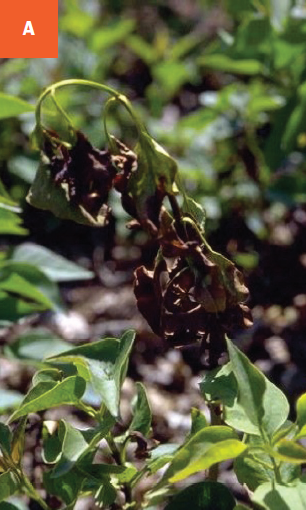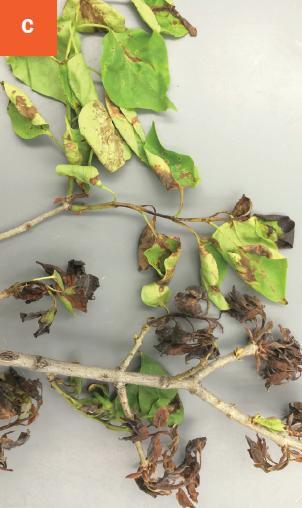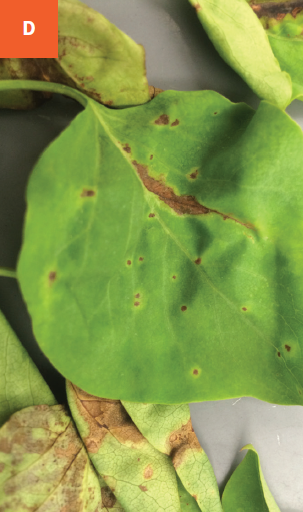Bacterial Blight of Lilac
Pseudomonas syringae pv. syringae (bacterium)
HOST All lilac shrubs and trees
DAMAGE/SYMPTOMS In spring, small, water-soaked lesions appear on the leaves. Lesions may expand and coalesce into larger brown areas. Affected young shoots are quickly girdled, and show wilting and blackening of stems, leaves, and/or flower clusters. Dark streaks may be visible on affected shoots.
DISEASE CYCLE The bacterium can overwinter in infected twigs and cankers on the plant, in dead plant debris, on neighboring plants, or in the soil surrounding the plant. In the spring, the bacterium can then be spread to susceptible plants by splashing water, insect vectors, or pruning tools. Pseudomonas spp. infect through open wounds in the plant.
MANAGEMENT Focus on supporting plant vigor by providing adequate water and nutrients during the growing season. Prune out and discard infected branches and leaves. Make the pruning cut 10 to 12 inches below the visible symptoms of disease and sterilize your tools between cuts with 70% ethyl alcohol or a standard household disinfectant spray. Avoid hitting the foliage during sprinkler irrigation to minimize possible spread of the bacteria. Consider healthy pruning to increase air flow and light penetration. Chemical control is not recommended in the urban setting.
A Shoot dieback following bacterial infection. B Multiple young shoots affected by bacterial blight. C Dark brown leaf spots with light green margins and dieback of branches due to bacterial blight infection. D Dark brown leaf spots with light green margins.




